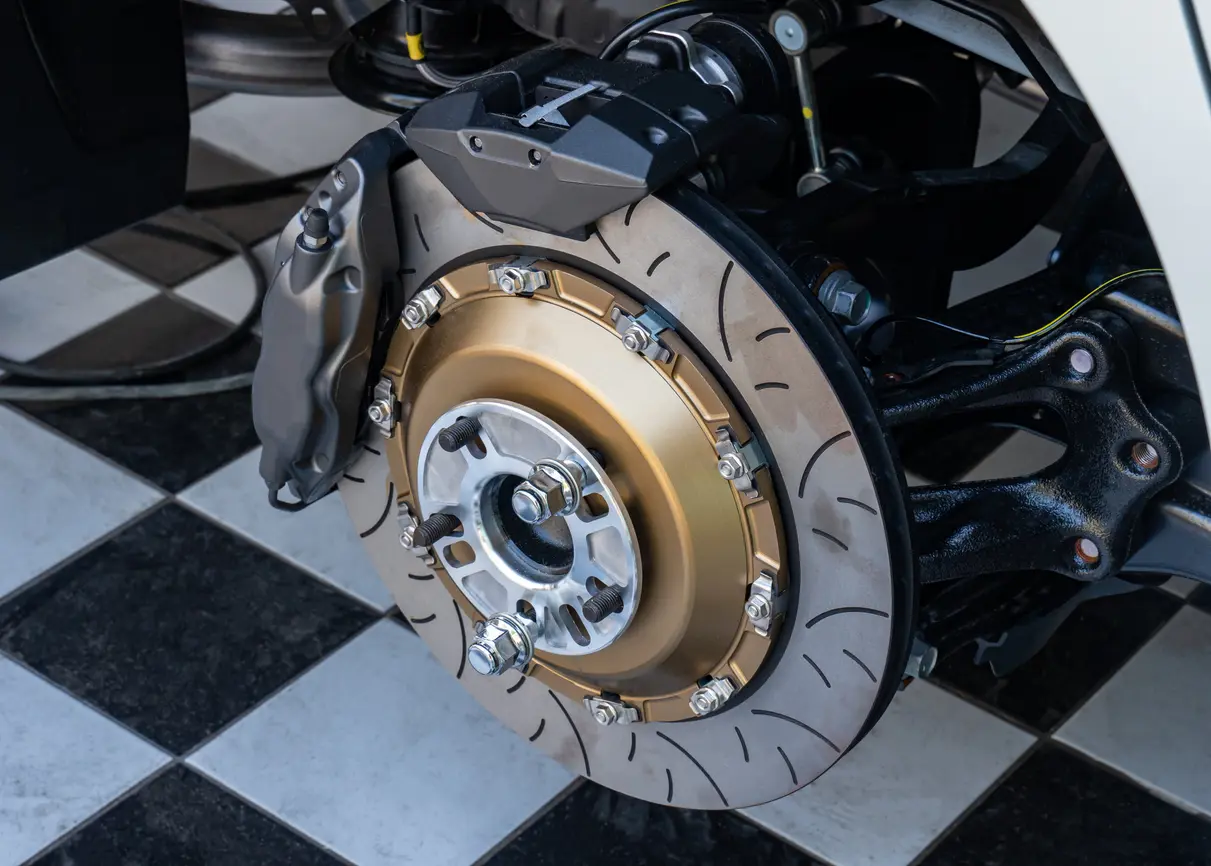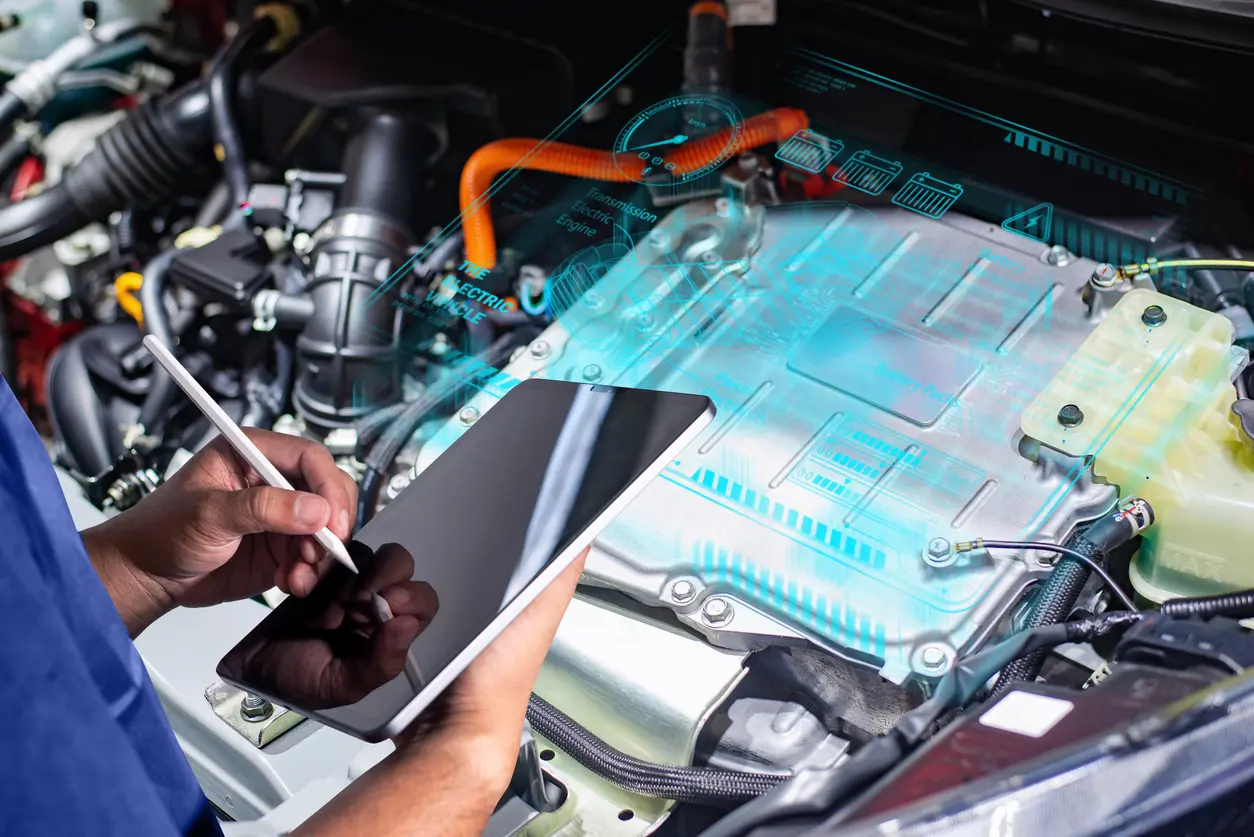Why do EVs need brake jobs?
Unlike gas-powered cars, EVs have regenerative braking. Regenerative braking helps recharge an EV’s battery as you drive by turning kinetic energy into electric power. To achieve this, the vehicle controls the flow of electricity through the motor-generator, an electrical device that converts electricity to motion and vice versa.
In addition to regenerative brakes, EVs also have standard hydraulic brakes. The hydraulic brakes step in when you stop suddenly or when the brake pedal is held down for a long time. In all other circumstances, regenerative braking is usually used.
As the name implies, hydraulic brakes use a liquid—brake fluid—to apply pressure to the brakes and slow down the vehicle. Brake fluid has special properties to help it do its job, so never replace it with another automotive fluid.
Although the regenerative brakes perform most of the action, your EV’s hydraulic brake parts still require regular maintenance so they can work properly when you need them.
Signs your brakes need attention
It’s wise to have your brakes inspected every time you do a seasonal tire change. At minimum, brake servicing should be done every two years.
To keep hydraulic brakes in good condition, you need to flush and replenish your brake fluid roughly every 30,000 km. Keep in mind that your EV’s brake pads will likely need replacing every five years.
Outside of this schedule, take your EV in for brake maintenance if you notice any of these signs:
- grinding sound when braking
- brake pedal is less responsive
- steering wheel feels loose
- reduced brake performance (increased time needed to stop)
What does an EV brake job include?
To start, an auto technician will raise your car on a hoist and remove the wheels. Next, they’ll inspect and clean every component of your braking system, including the calipers, pistons, and rotors.
The technician may recommend replacing certain components. You can always ask to see the worn components. If you do inspect them, look for rough surfaces, rust, dimpling, and excessive wear.
Trust only an experienced professional who’s worked on your vehicle type with this task. They’ll have the right tools, knowledge, and skills to assess the vehicle’s parts.
After getting a brake servicing, you should see a noticeable improvement in how your brakes operate.
Brake maintenance
Aside from taking your EV in for a brake job, you can help maintain your brakes with these tips:
- Avoid abrupt stops.
- Don’t overload your vehicle.
- Avoid keeping your foot on the brake pedal for a long period.
All NexDrive technicians are highly experienced in working with a wide range of EVs. You can also find the right brake parts for your EV at your local NexDrive service centre. Stop by any centre to speak with an expert about maintaining and servicing your EV’s brakes.
Find a NexDrive FacilityOther Resources

Why do electric car tires wear out so fast?
EV tires experience increased tread wear because of instant torque and unsprung weight. Learn why electric vehicles lead to worn-out tires and how to extend the lifespan of EV tires with proper maintenance.

Why regenerative braking is bad for your brake pads
Regenerative braking improves energy efficiency, but can cause brake pad issues because of reduced mechanical brake use. Learn how to maintain your brake system and prevent costly repairs in this article.

Does an EV need regular general maintenance?
Although EVs require less maintenance than gas-powered vehicles, they still need regular care. Learn about battery health, brake maintenance, and more here.
